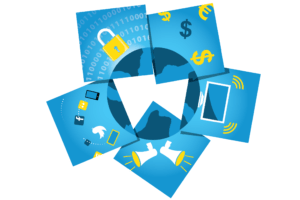From developing a Reserves Policy to conducting a risk assessment, this section will equip you to help your organisation weather financial challenges.

A RESERVE IS CRITICAL FOR LONG-TERM SUSTAINABILITY
- In financial statements or annual accounts, reserves may be named: General Reserves; Unrestricted Reserves; General Purpose Fund; General Fund; Accumulated Surplus; Net Assets.
- Whatever you call them in your financial statements, reserves are your buffer, your savings, your safety margin, your rainy day fund, your financial cushion and your room to maneuver. An organisation ideally has reserves so that it can continue to operate in the face of sudden decreases in external funding and also to give it the possibility to act on strategic opportunities not initially budgeted for, if and when they arise.
- Reserves are your organizational savings. They generally come from annual surpluses that result from unrestricted funds that you don’t need to cover your current expenses and are liquid, not invested in furniture, or computers or other fixed assets.
- Reserves are built up over time as surpluses are planned for and achieved. Reserves are the result of a deliberate and planned ‘setting aside’ of some or all of the annual surplus.
ESTABLISH A RESERVES POLICY
Best practice is to establish a Reserves Policy for your organisation that states:
- The current amount of your available financial cushion/reserve/savings
- The ideal amount of reserves you should have
- The reasons or circumstances that support that ideal level or amount of reserves
- Where the reserves will come from (i.e., the source(s) you will generate them from)
- How the reserves are managed
- The process for accessing the reserves
- That the level of the reserves will be monitored throughout the year, and
- That the reserve policy, and the ‘target’ or ideal reserve level, will be reviewed once a year to ensure that it still meets your organisation’s changing need and circumstances.
A reserve policy explains to existing and potential funders, donors and other stakeholders why you are holding a particular amount of reserves. A good reserve policy gives confidence to stakeholders that your finances are being managed proactively and responsibly.
SET YOUR TARGET RESERVE LEVEL
Every organisation is different. Each must undertake an examination of its own circumstances in order to determine the level of operating reserve that is sufficient to mitigate stated risks. Here are some circumstances that you should consider when establishing your target reserve level:
1. The stability and reliability of your funding sources: For example, if you have multi-year funding agreements with governments, then you could be OK with one or two months of reserves. If you have project or single-year funding you should aim to build a longer-lasting reserve in case of non-renewal of these funding sources.
2. The diversity of your revenue sources: A not-for-profit that relies on a significant annual grant, for example, should ensure it has a reserve fund large enough to cover a period of time should that grant be cancelled or delayed unexpectedly.
3. Whether there are other sources of cash that could be called upon in the event of an unanticipated opportunity or threat: For example, a line of credit might provide the resources to pursue a strategic opportunity.
4. The accuracy of budgeting and the frequency and amount of unexpected expenses.
5. The nature of your organisation’s expenditures, and its capacity to quickly scale back expenditures in the face of unexpected decreases in funding.
6. Cash flows, and the adequacy of cash to meet expected, and unexpected demands.
7. An analysis of future needs, opportunities, plans, contingencies or risks; an assessment of the likelihood of each of those needs arising; and, the potential consequences if the organisation cannot meet them.
CONDUCT A RISK ASSESSMENT
A Risk Assessment is an important step in helping you to identify the right level of reserves. It helps to identify areas of uncertainty that your organisation will be better able to manage with reserves. Look back to the SWOT exercise you did. What internal weaknesses and external threats did you identify? These are the risks you need to pay attention to. Some are more likely to happen and will have a more significant impact on the organisation. What signs should you be watching for, who should scan for them and what actions do you take if you see risks materialising? Which of those identified risks will be less impactful (i.e., mitigated) if you have organisational savings? How much savings would you need? Talk about the risks and write down your plans for dealing with them should they arise.
For example, if all your external funding was suddenly withdrawn, how long could you continue to operate?
Calculate the number of weeks:
[General Reserves / (Total Expenses – Unrestricted revenues)] x 52 = the number of weeks you could continue to operate.
Again, having unrestricted revenues (i.e., revenues controlled by your organization) and a Reserve Fund (accumulated organizational surpluses that are not invested in furniture or equipment or other fixed assets and so are cash or near-cash) mean that you are less vulnerable to funding changes and more financially sustainable.

Financial Sustainability Plan
Ensure that your organisation survives and thrives by strengthening its fiscal framework.
Chapters

Organisational Strength Map
Use this tool to identify your organisation’s strengths and explore areas for growth and development.
Strategic Planning Toolkit
Build your strategic plan and improve your organisation’s effectiveness with these strategic planning tools and fact sheets. Not sure where to start? Check out the Starting Points page for advice tailored to your situation.

Communications Strategy Toolkit
Effective communications planning will enable you to raise your organisation’s voice on issues that matter.

Social Media Strategy
This step-by-step tool will enable you to build an effective social media strategy and engage your online audiences.

Website Optimisation Plan
This 10-step plan will help you improve your website’s impact and usability.